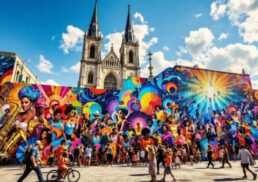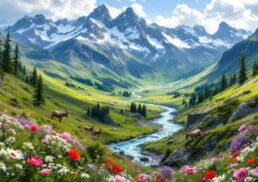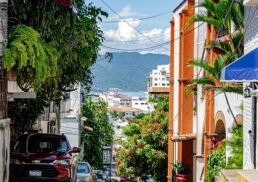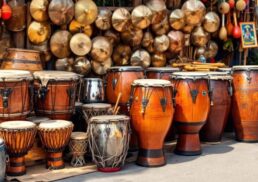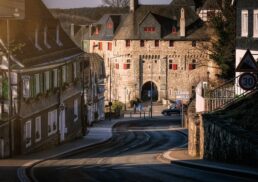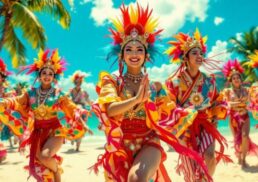When you search for ‘attractions at Peru,’ you seek experiences that leave lasting impressions. This straightforward guide spotlights the ancient landmarks, vibrant wildlife, and cultural depth that define Peru’s appeal. Glimpse the wonder of Machu Picchu, the biodiversity of Manu National Park, and the living heritage of Lake Titicaca as we take you through Peru’s most iconic attractions, ensuring you miss nothing.
Table of Contents
Key Takeaways
Machu Picchu, a UNESCO World Heritage site, offers insights into Incan architecture and astronomy, but requires advanced planning to visit due to visitor limits and can be accessed by train or a challenging hike on the Inca Trail.
The Sacred Valley is rich with Inca heritage, with attractions like Pisac market and Ollantaytambo, and the lesser-known but equally fascinating Nazca Lines offer aerial tours to appreciate their grandeur and mystery.
Peru boasts diverse natural and cultural wonders including the floating Uros Islands on Lake Titicaca, the stunning architecture of Arequipa, the deep Colca Canyon with its Andean condors, and the biodiversity of Manu National Park in the Amazon.
Exploring the Majestic Inca City of Machu Picchu
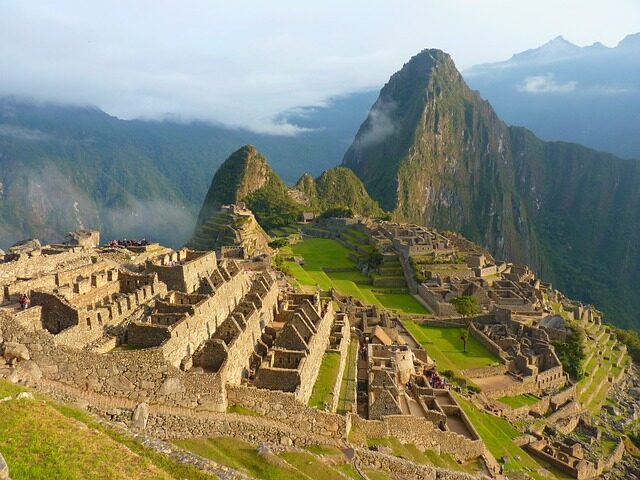
Perched majestically above the Urubamba River, Machu Picchu stands as a testament to the Inca civilization’s monumental engineering and architectural prowess. Declared a UNESCO World Heritage site, this ancient city captivates explorers with its dramatic location and well-preserved structures.
Built in the 15th century for Emperor Pachacuti and rediscovered in 1911 by Hiram Bingham, Machu Picchu’s classic Incan architecture, such as the Temple of the Sun and the Inti Watana stone, offer a window into the past, showcasing the Inca’s sophisticated urban planning and astronomical knowledge.
Planning Your Visit to Machu Picchu
The journey to Machu Picchu begins with meticulous planning to ensure a seamless experience. Here are the steps to follow:
Reserve your tickets well in advance, especially during peak season, to secure your spot in exploring one of the top tourist attractions in Peru.
Embark from Cusco, Urubamba, or Ollantaytambo and board a train to the bustling town of Aguas Calientes.
From Aguas Calientes, take a short bus ride that ascends to the ancient Inca ruins of Machu Picchu.
Keep in mind that daily visitor numbers are limited to preserve the site, so consider the timing of your trip carefully.
The dry season from May to October offers the most agreeable weather for visiting Machu Picchu.
The anticipation builds as you prepare for an excursion that will take you through the heart of the Inca civilization, a journey that not only spans landscapes but also centuries. As you plot your adventure to this majestic Inca city, the allure of its history beckons, promising a once-in-a-lifetime experience amidst the cloud-wreathed mountains of southern Peru.
Check out How to Plan a Trip to Machu Picchu For First Timers.
The Inca Trail: A Hiker’s Journey
For those drawn to the allure of the Inca Trail, the path to Machu Picchu is one of both challenge and enlightenment. Spanning approximately 42 kilometers, this storied route weaves through the Sacred Valley, inviting hikers to traverse a landscape steeped in history and natural splendor. The trail demands respect and preparation, particularly on the second day’s ascent of 1,200 meters, where the risk of altitude sickness lurks at elevations above 4,000 meters. With capacity strictly regulated, securing a spot with an agency is essential, especially from June to August, the trail’s high season.
As you reach the culmination of your trek at the Sun Gate of Machu Picchu mountain, the sense of accomplishment is unparalleled. The ancient ruins emerge from the mist, a reward for those who have ventured along the Inca civilization’s sacred pathways. This is the moment where the past converges with the present, where each step on the Inca Trail becomes a part of your own epic tale.
Alternative Routes for Non-Hikers
While the Inca Trail offers a transformative journey for trekkers, there are alternative routes to Machu Picchu for those who prefer a less physically demanding approach. A scenic train and bus ride can transport visitors to the heart of this majestic Inca city, ensuring that the wonder of Machu Picchu is accessible to all.
Whether you arrive on foot or by wheels, the grandeur of this ancient site with its rich history remains undiminished, its stone walls and terraces whispering stories of a bygone era to every traveler.
The Sacred Valley: A Fertile Expanse Brimming with Inca Heritage
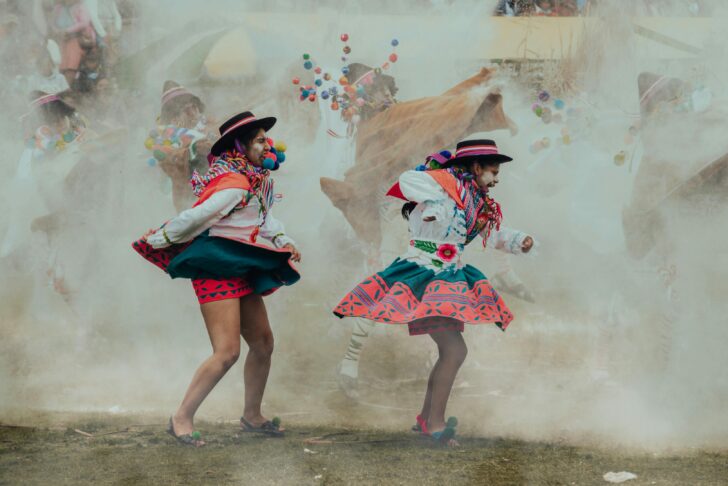
Cradled between the Andean mountains, the Sacred Valley of the Incas unfurls as a verdant tapestry rich with archaeological sites and cultural relics. Renowned as one of the prime attractions in Peru, this fertile expanse is dotted with ruins that echo the ingenuity of the Inca civilization, such as the hilltop citadel of Pisac, the agricultural wonder of Moray’s terraces, and the well-preserved fortress of Ollantaytambo.
Beyond its historical allure, the valley offers a blend of adventure and cultural immersion, with lesser-known gems like Choquequirao beckoning the intrepid explorer to discover plazas and ceremonial buildings reminiscent of the famed Machu Picchu.
Market Day at Pisac
The market at Pisac is a riot of color and craftsmanship, where the heritage of the Inca is woven into the fabric of daily life. Open daily, the market truly comes to life on Sundays, with its expanded offerings drawing locals and tourists alike. Here, amidst the hustle and bustle, visitors can marvel at the intricate handiwork of local artisans, who continue to practice traditional weaving techniques, and savor the flavors of local delicacies.
From vibrant textiles to exquisite pottery and jewelry, the Pisac market is a treasure trove for those seeking to immerse themselves in the heart of Peruvian culture.
Ollantaytambo: Living Inca Town
Ollantaytambo is a living museum, a place where the past and present of the Inca civilization intertwine. This strategic starting point for treks to Machu Picchu captivates visitors with its imposing terraces and fortresses that showcase advanced construction techniques of an ancient era.
Today, the town’s historical essence thrives, with its inhabitants preserving a way of life that has endured for centuries, making Ollantaytambo a must-visit location for anyone wishing to step back in time and explore the roots of Inca heritage.
The Enigmatic Nazca Lines: Peru’s Desert Mystery
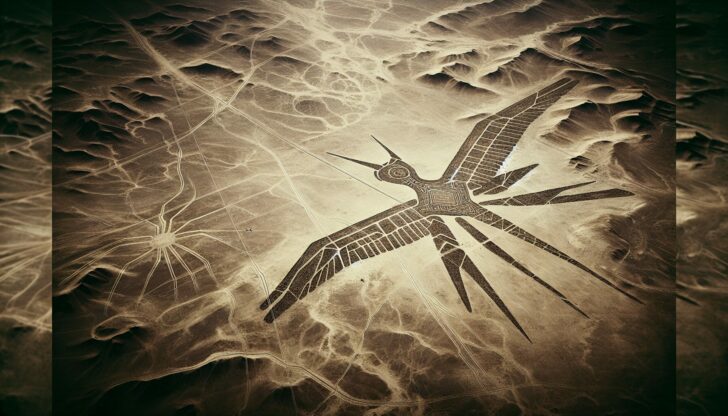
The Nazca Lines, etched into the arid landscape of southern Peru, are a mesmerizing enigma that has puzzled scholars and visitors alike. These sprawling geoglyphs, created by the Nazca culture between 200 BC and 700 AD, depict an array of designs from animals to abstract shapes, and their true purpose remains a subject of speculation.
Whether seen as celestial calendars, religious symbols, or even extraterrestrial markers, the mysterious Nazca Lines are an archaeological site that invites intrigue and wonder.
Air Tours Over the Nazca Desert
To truly grasp the magnitude of the Nazca Lines, one must take to the skies. Air tours provide a unique vantage point from which to comprehend these enormous figures, revealing their intricate details and the precision with which they were crafted.
As you soar above the Nazca Desert, the lines emerge in full splendor, a testament to the ingenuity and creativity of an ancient people whose legacy is written in the sands of time.
Deciphering the Ancient Geoglyphs
The allure of the Nazca Lines extends beyond their visual impact; it lies also in the myriad theories that seek to unravel their mystery. Whether viewed as astronomical observatories, as suggested by Paul Kosok and Maria Reiche, or as sacred paths connected to water worship practices, as proposed by Johan Reinhard, each theory contributes to the rich tapestry of legends and interpretations surrounding these ancient geoglyphs.
Amidst skepticism and fascination, visitors are drawn to form their own connections with these enigmatic symbols, pondering their origins and the civilization that created them.
Lake Titicaca’s Floating Islands and Cultural Tapestry
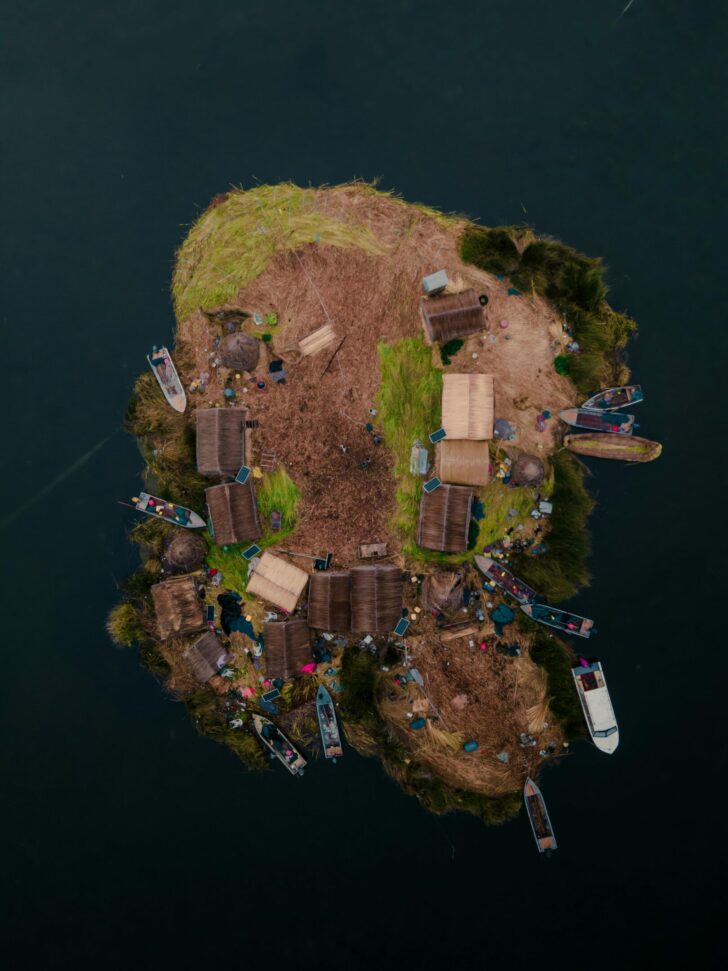
Among the sparkling waters of Lake Titicaca, the world’s highest navigable lake, lie the man-made marvels of the Uros Floating Islands. Constructed from totora reeds, these islands are a living example of the resourcefulness and adaptability of the Uros people, who maintain their unique way of life amidst the lake’s serene beauty.
The cultural tapestry of Lake Titicaca is further enriched by the traditional villages that dot its shores, offering visitors a chance to witness the enduring customs and community spirit that have thrived here for generations.
Life on the Uros Islands
The Uros Islands are a testament to human ingenuity and cultural resilience. Here, the Uros people, whose original language has all but vanished, continue to speak Aymara and Quechua as they carry on the traditions of their ancestors. Skilled in weaving and fishing, they sustain themselves with the bounty provided by Lake Titicaca and the versatile totora reeds.
Visitors can traverse the reed islands via boat tours from Puno, engaging with the inhabitants, learning about their culture, and supporting their economy through the purchase of handcrafted goods.
Taquile and Amantaní: Traditions Preserved
Beyond the Uros Islands, Taquile and Amantaní stand as bastions of traditional Peruvian culture. These islands offer an authentic glimpse into the lives of communities that have preserved their customs and textile artistry through the ages. The age-old practices embedded in their textiles narrate stories of history and folklore, attracting those who seek a genuine connection with the past and a deeper understanding of the cultural fabric of Lake Titicaca.
Arequipa: The White City’s Volcanic Allure
Nestled in the shadow of imposing volcanoes, Arequipa, known as “The White City,” captivates with its stunning architecture made from sillar, a pale volcanic rock. This UNESCO World Heritage site is a mosaic of cultural and geological influences, with the grandeur of the Santa Catalina Monastery and the charm of traditional casonas painting a picture of a city rich in history and beauty.
Architectural Wonders of Arequipa
Arequipa’s historical center is an architectural gem, where the use of sillar stone has sculpted a landscape of robust walls, archways, and baroque facades that gleam in the sunlight. The casonas, with their elaborate facades and spacious courtyards, offer a glimpse into the city’s past, where European and native building techniques merged to create a style that is distinctly Arequipan.
Gastronomy and Culture in Arequipa
The cultural allure of Arequipa extends to its vibrant gastronomy, which serves as a delectable expression of the city’s identity. Renowned for traditional dishes like the zesty ceviche, Arequipa’s cuisine is a celebration of flavors that are both bold and nuanced.
Each culinary practice, from the preparation of fresh ingredients to the communal act of dining, weaves a rich tapestry of Arequipa’s cultural heritage, offering a feast for the senses that complements the city’s volcanic allure.
The Colossal Depths of Colca Canyon
Venture into the Colca Canyon, a spectacle of nature that ranks as the second deepest canyon in the world. Here, the landscape plunges 3,400 meters into the earth, creating a dramatic backdrop for the Andean condors that soar overhead.
With trekking routes that cater to every level of adventurer, the Grand Canyon offers both the thrill of exploration and the tranquility found in its thermal baths.
Observing Andean Condors at Cruz del Condor
At the Cruz del Condor lookout point, visitors are graced with the awe-inspiring sight of Andean condors in flight. Witnessing these majestic birds, with their impressive wingspan, gliding through the canyon is a moment of pure wonder—an encounter that is as humbling as it is unforgettable.
Cruz del Condor is an emblematic site that offers more than just a view; it provides a window into the grandeur of the natural world and the creatures that inhabit it.
The Thermal Baths of Chivay
After the day’s adventures in Colca Canyon, the thermal baths of Chivay beckon with their promise of relaxation. Whether you seek the exclusivity of the Colca Lodge Spa & Hot Springs or the communal spirit of the public La Calera hot springs, the healing waters offer a soothing remedy to weary travelers. These natural hot springs, rich in minerals, provide a tranquil oasis where one can unwind and reflect on the day’s discoveries amidst the breathtaking vistas of southern Peru.
Manu National Park: A Biodiversity Hotspot in the Amazon Rainforest
In the heart of the Amazon Rainforest lies Manu National Park, a UNESCO Man & Biosphere site that is a sanctuary for an astounding array of wildlife. Spanning 1.5 million hectares of diverse ecosystems, from cloud forests to lowland rainforests, Manu is a treasure trove of biodiversity.
With thousands of plant species and over a thousand bird species, including the majestic Harpy Eagle and the colorful Andean Cock-of-the-rock, this national park is a living library of ecological wonders.
Jungle Lodges and Guided Tours
Immersing oneself in the lush embrace of the Amazon is made possible by the jungle lodges nestled within Manu National Park. These lodges range from rustic to luxurious, all designed to harmonize with the environment and provide an authentic rainforest experience. With a commitment to sustainability, many lodges incorporate eco-friendly practices, ensuring that your stay contributes to the conservation of this precious habitat.
Guided tours in Manu offer:
Unforgettable wildlife encounters
Educational insights into the park’s flora and fauna
Silent night walks
Treks to learn about medicinal plants
These guided experiences are as enriching as they are diverse.
Wildlife Encounters in Manu
The wildlife of Manu National Park is as varied as the ecosystems it inhabits. From the vibrant parrots that adorn the treetops to the elusive jaguars that prowl the underbrush, Manu offers a window into the lives of some of the planet’s most fascinating creatures.
Along the riverbanks, you can find:
Caimans basking in the sun
Capybaras, the world’s largest rodents, grazing nearby
Turtles swimming in the water
Piranhas adding to the aquatic tableau
This diverse wildlife fosters a sense of wonder that lingers long after the lost city of the jungle fades from view.
Cusco’s Historic Heart: Plaza de Armas and Beyond
Cusco, the historic capital of the Inca Empire, radiates from its core at Plaza de Armas, a square that once served as the ceremonial center and now pulsates with the vibrant city life of modern Peru. Surrounded by iconic colonial buildings, including the Cathedral and the Government Palace, Plaza de Armas is a testament to the city’s rich heritage.
With the Fountain of Pachacuti as a centerpiece, this plaza is a focal point for festivals, parades, and everyday interactions, uniting the past and present in a lively cultural mosaic.
The Cathedral and Government Palace
The Cathedral of Lima, along with the adjacent Archbishop’s Palace and the Government Palace, anchors the east and north sides of Plaza de Armas, forming the architectural heart of the city. These historic buildings, with their Baroque mestizo architecture from the 18th century, are not only visually stunning but also historically significant, encapsulating the colonial era’s influence on the capital city.
The grandeur of these structures, set against the backdrop of the plaza, offers an immersive experience into the history and architecture that has shaped the city’s identity in the historic city center, also known as the historic center.
Exploring Cusco’s Vibrant Streets
The vibrant streets of Cusco extend from Plaza de Armas like veins, pulsating with the heartbeat of the city. Here, visitors can lose themselves in the buzz of activity, from the colorful markets to the echoes of traditional music.
The cobblestone streets of nearby towns like Pisac offer a glimpse into rural life in southern Peru, where the charm of traditional villages is palpable. Every corner of Cusco invites exploration, whether it’s through its historic buildings, its gastronomic delights, or simply its infectious energy.
Adventure and Relaxation at Rainbow Mountain
Rainbow Mountain, a geological wonder over 5,200 meters above sea level, beckons with its vividly colored mineral deposits and the promise of high-altitude adventure. The mountain’s striking appearance is a magnet for outdoor enthusiasts and photographers alike, offering a trek that is as challenging as it is rewarding.
With the best trekking conditions during the dry season, Rainbow Mountain stands as a testament to Peru’s natural beauty and the allure of its snow-capped mountains.
Preparing for the High Altitude Hike
The journey to Rainbow Mountain demands preparation, as the high altitude can present formidable challenges even to seasoned hikers. Here are some tips to help you prepare:
Acclimatization is key, with a recommended stay of a few days in Cusco to adjust to the altitude before attempting the hike.
Cardiovascular and strength training can enhance physical readiness.
A guided tour can offer both safety and insight into the mountain’s unique environment.
Equipped with proper gear and a respect for the mountain’s conditions, trekkers can navigate the path to Rainbow Mountain with confidence and awe.
The Best Time to Visit
Timing is crucial when planning a visit to Rainbow Mountain, with the dry season from May through October offering the most favorable conditions for trekking. During this time, the likelihood of rain is reduced, ensuring clearer trails and safer hiking experiences. The mountain’s vivid colors are most striking following rainfall, with the end of the dry season providing some of the most breathtaking views.
To avoid the crowds and fully embrace the mountain’s serenity, an early morning ascent is recommended.
Coastal Charms: Paracas National Reserve and the Ballestas Islands
The coastal region of Peru, located in South America, reveals another facet of the country’s diverse landscapes at Paracas National Reserve and the Ballestas Islands. Here, the Pacific Ocean meets the desert, creating a habitat for an array of plant and animal species. The national reserve’s 827,800 acres teem with life, from endangered Humboldt penguins to South American sea lions.
Meanwhile, the Ballestas Islands offer a marine sanctuary where visitors can witness the rich tapestry of wildlife that thrives along the Pacific coast.
Wildlife Watching at Ballestas Islands
A visit to the Ballestas Islands is a must for wildlife enthusiasts seeking to observe the abundance of marine life in its natural setting. Boat tours circumnavigate the islands, allowing for up-close encounters with:
playful sea lions
diving pelicans
waddling penguins
a variety of guano birds
The islands serve as a crucial breeding ground for many species, and the experience of watching these animals in their habitat is both thrilling and educational.
Conservation efforts ensure that this delicate ecosystem remains a sanctuary for future generations to enjoy.
Adventures in the Paracas Reserve
The Paracas National Reserve is not only a haven for wildlife but also a playground for adventure seekers. The reserve’s waters are a prime spot for whale and dolphin watching, while its beaches, particularly La Mina and Yumanque, invite visitors to sunbathe, swim, and camp under the stars.
On land, the Paracas Peninsula offers trails for walking and areas for quad biking, with guides available to enhance the experience for novices. Whether on the water or the dunes, the adventures in Paracas are as vast as the reserve’s landscapes.
Summary
From the heights of Machu Picchu to the depths of Colca Canyon, the diversity of Peru’s attractions is unparalleled. The country’s rich history is etched into every stone of its ancient ruins, while its natural wonders—from the Amazon rainforest to the vibrant ecosystems of Lake Titicaca—invite exploration and discovery. Whether you’re drawn to the mystery of the Nazca Lines or the cultural vibrancy of Cusco, Peru offers a journey that transcends the ordinary, leaving every traveler with memories that resonate with the spirit of the Incan heartland.
Frequently Asked Questions
What is the best time of year to hike the Inca Trail to Machu Picchu?
The best time to hike the Inca Trail to Machu Picchu is during the dry season from May to September, when the weather is more favorable and the trails are less likely to be muddy or slippery.
Can I visit the Nazca Lines without taking an air tour?
You can visit the Nazca Lines without taking an air tour by visiting the viewing towers along the Pan-American Highway, which offer a glimpse of the geoglyphs. Keep in mind that the experience is best appreciated from the air.
Are there accommodations available on the Uros Floating Islands?
Yes, visitors can find lodging options available on some of the Uros Islands for an overnight experience.
What wildlife can I expect to see in Manu National Park?
In Manu National Park, you can expect to see a diverse range of wildlife, such as over 1,000 bird species, the giant otter, jaguar, and various plant species.
Is it necessary to have a guide when visiting Rainbow Mountain?
Yes, it is highly recommended to have a guide when visiting Rainbow Mountain to navigate the high-altitude terrain and learn about its geological and cultural significance.

